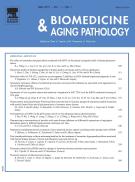Cardioprotective effects of Ficus religiosa in neonatal streptozotocin-induced diabetic cardiomyopathy in rats - 27/02/14
 , Ashok Kumar, Bharatur Parthasarathy Srinivasan, Anisha Chauhan, Kiran Dubey
, Ashok Kumar, Bharatur Parthasarathy Srinivasan, Anisha Chauhan, Kiran DubeyAbstract |
Diabetes mellitus is one of the major problems. In developing as well as developed countries. Uncontrolled blood glucose level and oxidative stress plays a vital role in pathogenesis of the diabetic cardiomyopathy. The present study was aimed to investigate the effect of Ficus religiosa in STZ-induced diabetic cardiomyopathy in rats. Streptozotocin (90mg/kg i.p.), administered to 2 days old neonates (10–12g), resulted in significant increase in fasting blood glucose, HbA1c, cardiac hypertrophic index, TGF-β1, TNFα, malondialdehyde, LDH, CK-MB, BNP and caspase-3, blood pressure. It caused significant reduction in plasma insulin, heart rate and superoxide dismutase. The eight-week treatment of F. religiosa started after induction of six weeks of diabetes, the treatment significantly improved diabetic markers, oxidative stress, inflammatory and cardiac markers. Results of the present study suggest that the cardioprotective effect of F. religiosa may be mediated through the control of diabetes, modulation of oxidative marker and cytokine (TGF-β1, TNFα).
Le texte complet de cet article est disponible en PDF.Keywords : Diabetic cardiomyopathy, Ficus religiosa, Oxidative stress, LDH, CK-MB, BNP, Caspase-3
Plan
Vol 4 - N° 1
P. 53-58 - janvier 2014 Retour au numéroBienvenue sur EM-consulte, la référence des professionnels de santé.
L’accès au texte intégral de cet article nécessite un abonnement.
Déjà abonné à cette revue ?

